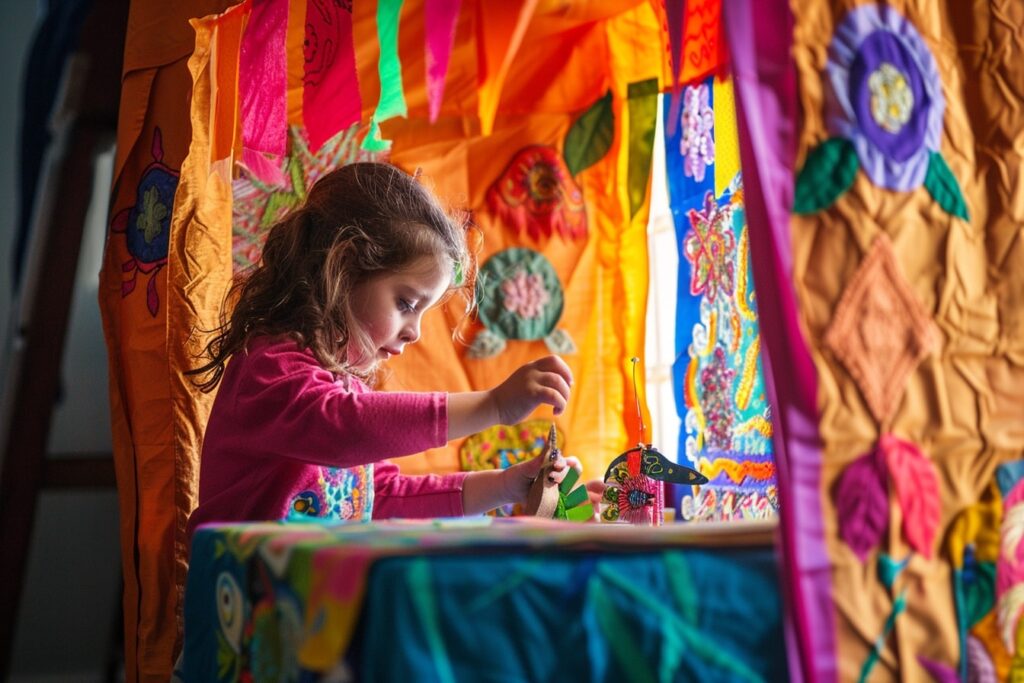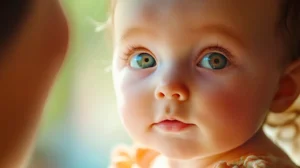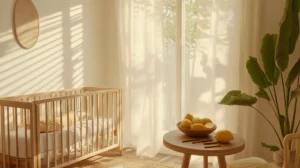Table of Contents
ToggleDIY Puppet Theater: Imaginative Play for Little Actors
Imagine a cozy corner of your home transformed into a magical realm where imagination knows no bounds. Picture your little ones donning handmade puppets, their faces lit up with excitement as they embark on adventures filled with laughter, learning, and endless possibilities. This is the enchanting world of DIY puppet theater, where creativity takes center stage and every performance is a celebration of imagination.
As parents, we understand the importance of nurturing our children’s creativity from a young age. Imagination is not merely a pastime for children; it is a vital tool for their cognitive, emotional, and social development. Through imaginative play, children learn to explore new ideas, develop problem-solving skills, and express themselves in meaningful ways.
Research has shown that imaginative play plays a crucial role in children’s cognitive development, helping them to develop essential skills such as language acquisition, critical thinking, and empathy. By engaging in pretend play scenarios, children are able to make sense of the world around them, experiment with different roles and perspectives, and practice social skills such as cooperation, negotiation, and conflict resolution.
But imaginative play is not just about learning; it’s also about having fun! There’s something truly magical about watching our children immerse themselves in imaginary worlds, where anything is possible and the only limit is their own creativity. Whether they’re putting on a puppet show for their stuffed animals, reenacting their favorite storybook scenes, or inventing fantastical adventures of their own, every moment of imaginative play is an opportunity for growth, discovery, and joy.
That’s why I’m thrilled to share with you the wonders of DIY puppet theater—a simple yet incredibly powerful tool for fostering imaginative play in children of all ages. In this blog post, we’ll explore the ins and outs of creating your very own puppet theater, from crafting characters and designing backdrops to putting on unforgettable performances that will inspire and delight both children and adults alike.
So, are you ready to embark on a journey into the magical world of puppetry? Let’s dive in and discover the endless possibilities of imaginative play with DIY puppet theater!
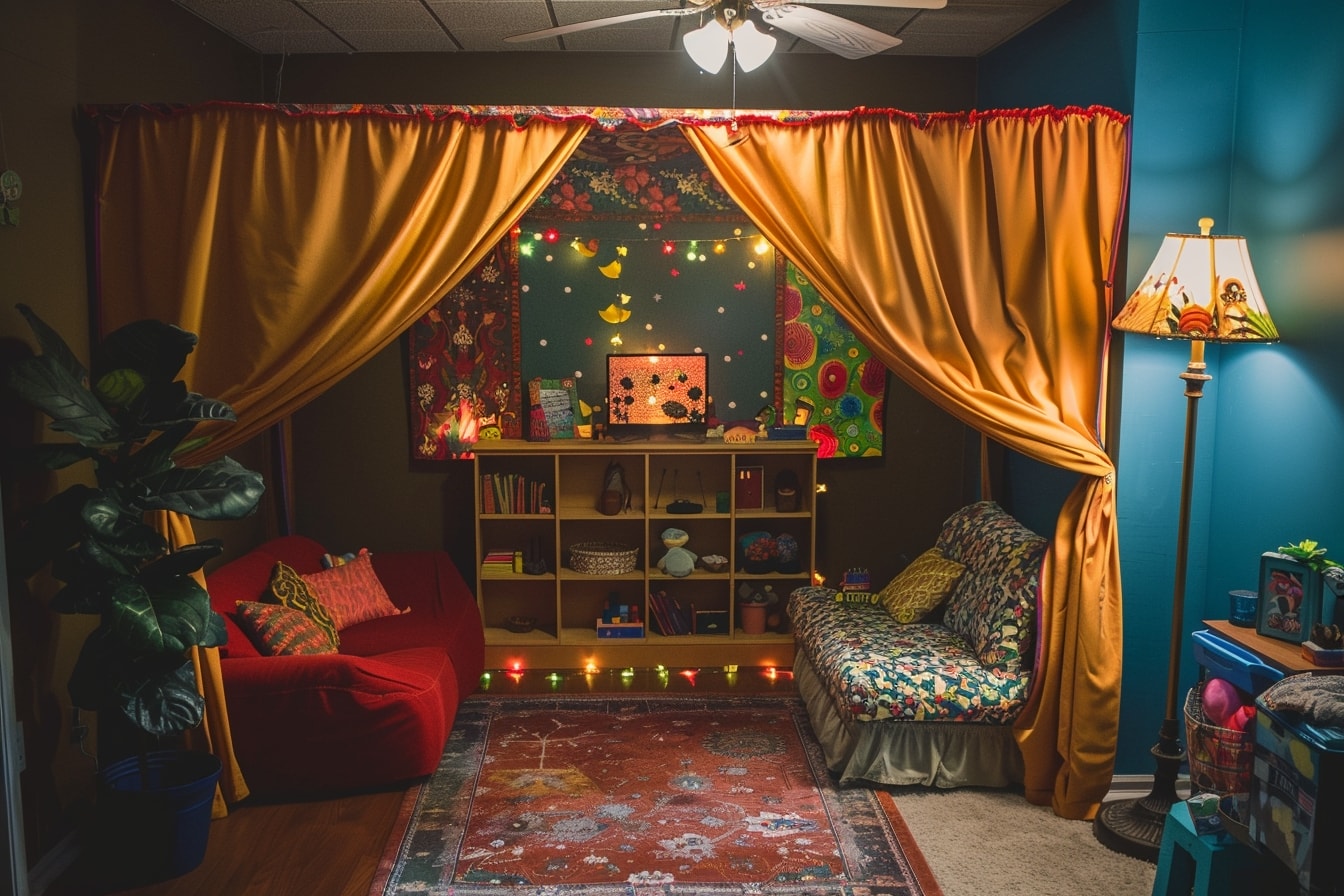
Setting the Stage
Welcome to the first act of our puppet theater adventure! In this section, we’ll roll up our sleeves and dive into the exciting world of DIY puppet theater setup. Whether you have a spare room, a cozy corner, or a backyard oasis, there’s a puppet theater solution that’s perfect for your space and budget.
Choosing the Perfect Location
Before we start building our puppet theater, let’s take a moment to consider where it will live in your home. Ideally, you’ll want to choose a location that’s easily accessible, well-lit, and free from distractions. A corner of the living room, a dedicated playroom, or even a quiet nook in the bedroom can serve as the perfect stage for your puppet shows.
Think about the layout of your space and how you can maximize the use of available resources. For example, if you have a bookshelf or a freestanding partition, you can repurpose it as a backdrop for your puppet theater. Alternatively, you can set up a portable puppet theater that can be easily moved from room to room or even taken outdoors for al fresco performances.
Gathering Materials and Supplies
Now that you’ve chosen the perfect location for your puppet theater, it’s time to gather the materials and supplies you’ll need to bring your vision to life. The good news is that you don’t need to break the bank to create a stunning puppet theater—many of the materials can be found around the house or purchased inexpensively at your local craft store.
- Frame: Start by selecting a sturdy frame for your puppet theater. This could be anything from a wooden easel to a tension rod fitted between two walls. Get creative and think outside the box!
- Fabric: Choose a fabric for your theater curtain that complements your space and sets the stage for imaginative play. Consider using colorful curtains, patterned bed sheets, or even a plain bedsheet that can be decorated with fabric paint or markers.
- Backdrop: Enhance the theatrical experience by creating a backdrop that sets the scene for your puppet shows. You can use a large piece of fabric or cardboard as a blank canvas for your artistic endeavors, adding elements like painted scenery, appliqued designs, or even removable decals for versatility.
- Accessories: Don’t forget the finishing touches! Consider adding decorative elements such as bunting, fairy lights, or themed props to add charm and personality to your puppet theater.
Once you’ve gathered all your materials and supplies, it’s time to roll up your sleeves and get to work! In the next section, we’ll dive into the exciting world of puppet making and unleash our creativity as we bring our puppet characters to life. Get ready for a puppet theater experience like no other—where the only limit is your imagination!
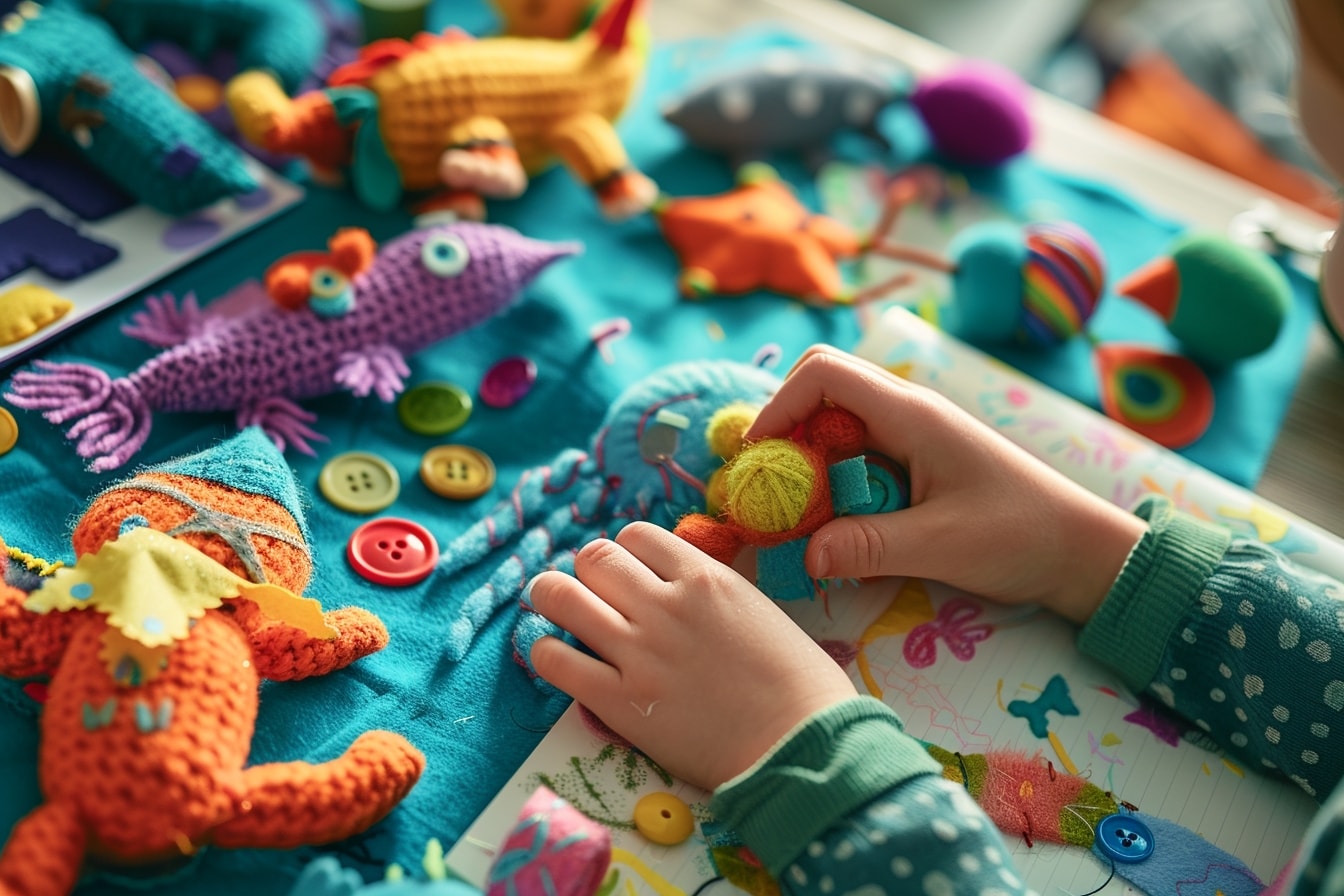
Crafting Characters
Welcome to the heart of the puppet theater experience—crafting characters that will come to life in the hands of your little actors! In this section, we’ll explore the art of puppet making, from simple sock puppets to elaborate wooden spoon creations. Get ready to unleash your creativity and bring your imagination to life!
Exploring Puppet-Making Techniques
When it comes to puppet making, the possibilities are endless. From traditional hand puppets to shadow puppets and marionettes, there’s a puppet-making technique to suit every age and skill level. Let’s explore some of the most popular options:
- Sock Puppets: One of the simplest and most versatile puppet-making techniques, sock puppets can be crafted using nothing more than a clean sock, some felt scraps, and a few basic sewing supplies. Get creative with different colors and textures to bring your sock puppet characters to life!
- Paper Bag Puppets: Another easy and budget-friendly option, paper bag puppets are perfect for younger children who may not have the dexterity for sewing. Simply decorate a paper bag with markers, crayons, or collage materials to create expressive puppet faces and characters.
- Wooden Spoon Puppets: For a more three-dimensional approach to puppet making, try crafting wooden spoon puppets using wooden spoons, craft foam, and googly eyes. These puppets are great for storytelling and imaginative play, and they’re easy to customize to fit any theme or character.
Personalizing Your Puppet Characters
Once you’ve chosen your puppet-making technique, it’s time to get creative and add some personality to your puppet characters. Encourage your children to think about the traits and characteristics of their puppet characters, and brainstorm ways to make them unique and memorable.
Consider incorporating elements of Caribbean culture into your puppet designs, such as vibrant colors, tropical motifs, and traditional clothing styles. You can also draw inspiration from Caribbean folklore, music, and traditions to create puppet characters that reflect the rich cultural heritage of the region.
Don’t be afraid to experiment with different materials and techniques to bring your puppet characters to life. Add embellishments like yarn hair, fabric scraps for clothing, and buttons for eyes to give your puppets personality and charm. The more time and effort you invest in crafting your puppet characters, the more rewarding the puppet theater experience will be for both you and your children!
In the next section, we’ll delve into the exciting world of set design and show you how to create stunning backdrops and scenery for your puppet theater. Get ready to transform your space into a magical world where anything is possible!
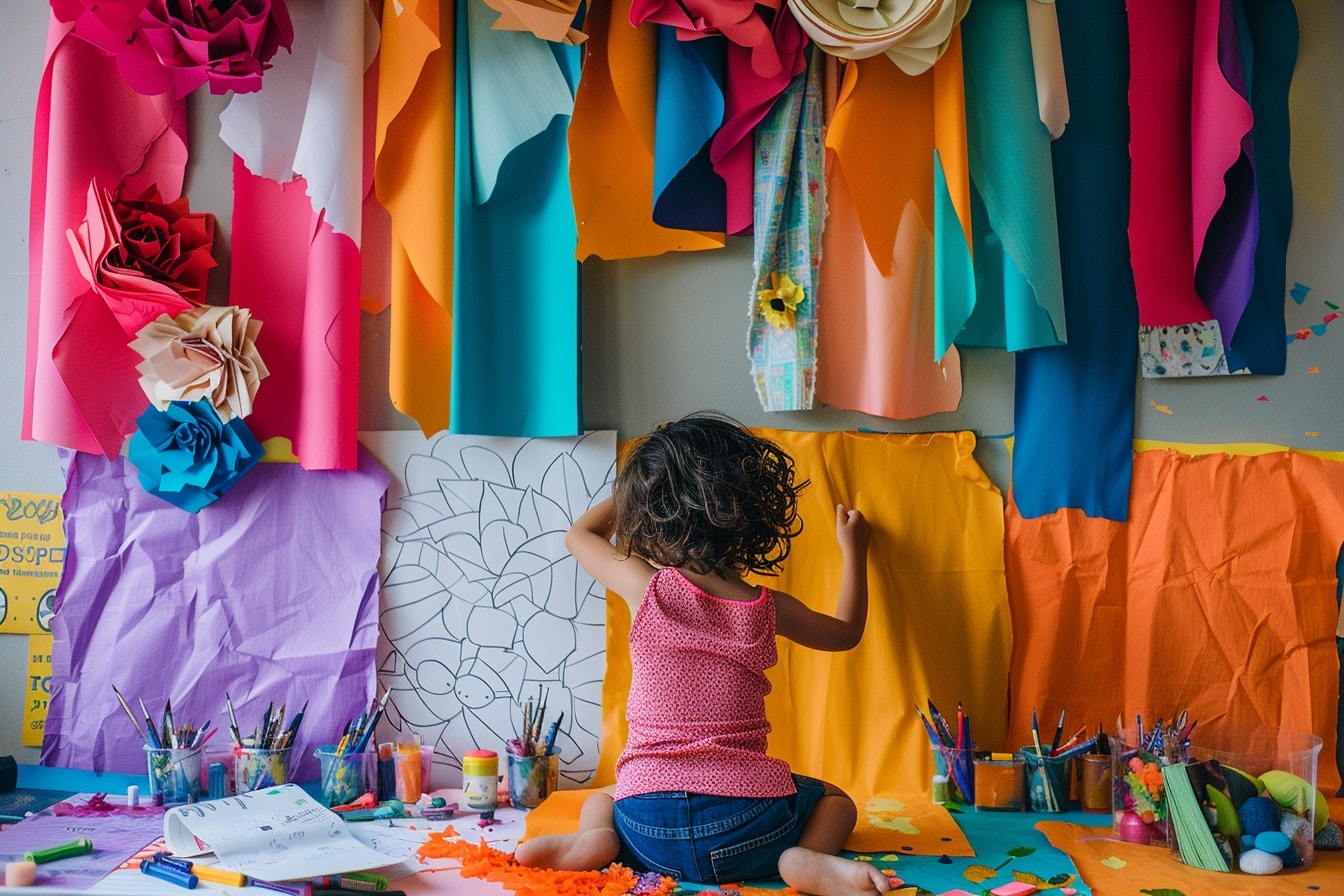
Creating the Scene
Welcome to the enchanting world of set design, where every backdrop tells a story and every detail sparks the imagination! In this section, we’ll explore the art of creating the perfect scene for your puppet theater, from tropical jungles to bustling marketplaces and everything in between. Get ready to unleash your creativity and transport your audience to a world of wonder!
Designing the Backdrop
The backdrop is the canvas upon which your puppet theater adventures will unfold, so it’s important to choose a design that sets the stage for imaginative play. Whether you’re crafting a simple fabric backdrop or a more elaborate cardboard scene, there are endless possibilities for creating the perfect backdrop for your puppet shows.
Consider incorporating elements of Caribbean culture into your backdrop design, such as lush tropical landscapes, vibrant island colors, and iconic landmarks. You can use fabric paint, applique, or even digital printing to bring your Caribbean-inspired backdrop to life, adding depth and dimension to your puppet theater setup.
If you’re feeling adventurous, why not create a multi-layered backdrop that allows for scene changes and storytelling possibilities? You can use curtains, panels, or even hinged screens to create a dynamic backdrop that can be easily customized to fit different puppet show themes and settings.
Adding Props and Accessories
No puppet theater is complete without a few props and accessories to enhance the storytelling experience. From tropical fruits and flowers to traditional Caribbean instruments and artifacts, there are countless ways to add depth and authenticity to your puppet theater setup.
Consider creating a prop box filled with themed props and accessories that children can use to bring their puppet shows to life. Encourage them to get creative and experiment with different props to create unique and memorable puppet performances.
Don’t forget to add some finishing touches to your puppet theater setup, such as fairy lights, bunting, or themed decorations. These little details can make a big difference in creating a magical atmosphere and setting the stage for imaginative play.
Creating Interactive Elements
One of the joys of puppet theater is the opportunity for audience participation and interaction. Consider adding interactive elements to your puppet theater setup, such as movable scenery, hidden compartments, or surprise props that children can discover during the show.
You can also incorporate technology into your puppet theater experience, such as sound effects, music, or digital projections, to add an extra layer of immersion and excitement. Get creative and think outside the box—there are endless possibilities for creating a truly unforgettable puppet theater experience!
With your backdrop set and your props in place, your puppet theater is ready to take center stage! In the next section, we’ll explore the art of puppeteering and show you how to bring your puppet characters to life with skill and flair. Get ready to dazzle your audience and ignite their imaginations with the magic of puppet theater!
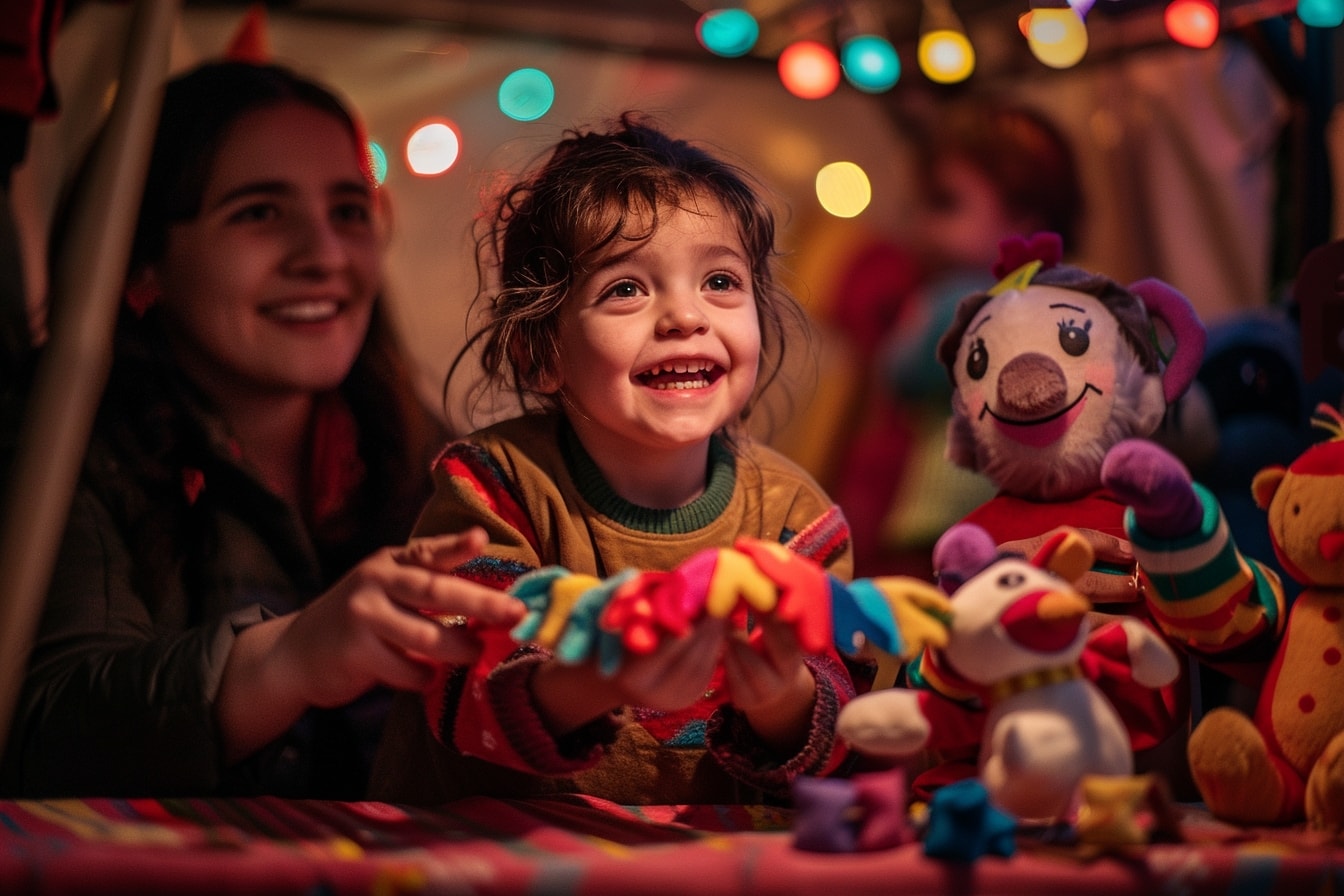
Putting on a Show
Welcome to the grand finale of our puppet theater journey—the moment when all your hard work and creativity come together to create a magical theatrical experience like no other! In this section, we’ll dive into the art of putting on a puppet show, from scripting and rehearsing to performing and captivating your audience. Get ready to dazzle and delight with your puppet theater prowess!
Scripting Your Puppet Show
Every great puppet show starts with a captivating script that engages both the performers and the audience. Whether you’re adapting a classic storybook tale or creating an original script from scratch, there are a few key elements to keep in mind:
- Engaging Storyline: Choose a storyline that is age-appropriate, engaging, and well-suited to your puppet characters. Consider themes and topics that resonate with your audience and encourage creativity and imagination.
- Dynamic Characters: Develop colorful and memorable characters that children can relate to and root for. Give each character a distinct personality, voice, and backstory to bring them to life on stage.
- Creative Dialogue: Write dialogue that is clear, concise, and full of personality. Keep in mind the age and language skills of your audience, and use simple language and expressive gestures to convey emotions and ideas.
Once you have a script in hand, it’s time to gather your cast and start rehearsing! Encourage your children to get involved in the scripting process, allowing them to contribute ideas, improvise dialogue, and bring their own unique perspective to the story.
Rehearsing with Your Puppet Actors
Rehearsal is the key to a successful puppet show, so be sure to schedule plenty of time for practice and preparation. Start by familiarizing your puppet actors with their characters and the storyline, helping them to understand their motivations and objectives.
Practice puppet manipulation techniques, such as lip-syncing, eye focus, and gesture, to bring your puppet characters to life with skill and flair. Encourage your children to experiment with different voices, movements, and expressions to create dynamic and engaging performances.
As you rehearse, pay attention to pacing, timing, and transitions, making adjustments as needed to ensure a smooth and seamless flow of action. Don’t be afraid to make changes to the script or blocking if something isn’t working—rehearsal is the time to experiment and refine your puppet show until it shines!
Performing with Confidence and Flair
Now that you’ve scripted and rehearsed your puppet show to perfection, it’s time to take the stage and dazzle your audience with your puppet theater prowess! As you perform, remember to:
- Project Confidence: Stand tall, speak clearly, and maintain eye contact with your audience to project confidence and command attention.
- Stay in Character: Keep your puppet characters consistent and true to their personalities, maintaining the illusion of life on stage.
- Engage Your Audience: Encourage audience participation and interaction, inviting children to join in the fun with laughter, applause, and cheers.
Above all, remember to have fun and enjoy the experience of performing with your puppet actors. Puppet theater is a celebration of creativity, imagination, and storytelling, and there’s nothing more rewarding than seeing your hard work and dedication come to life on stage. So break a leg, take a bow, and bask in the applause—your puppet show is sure to be a smash hit!
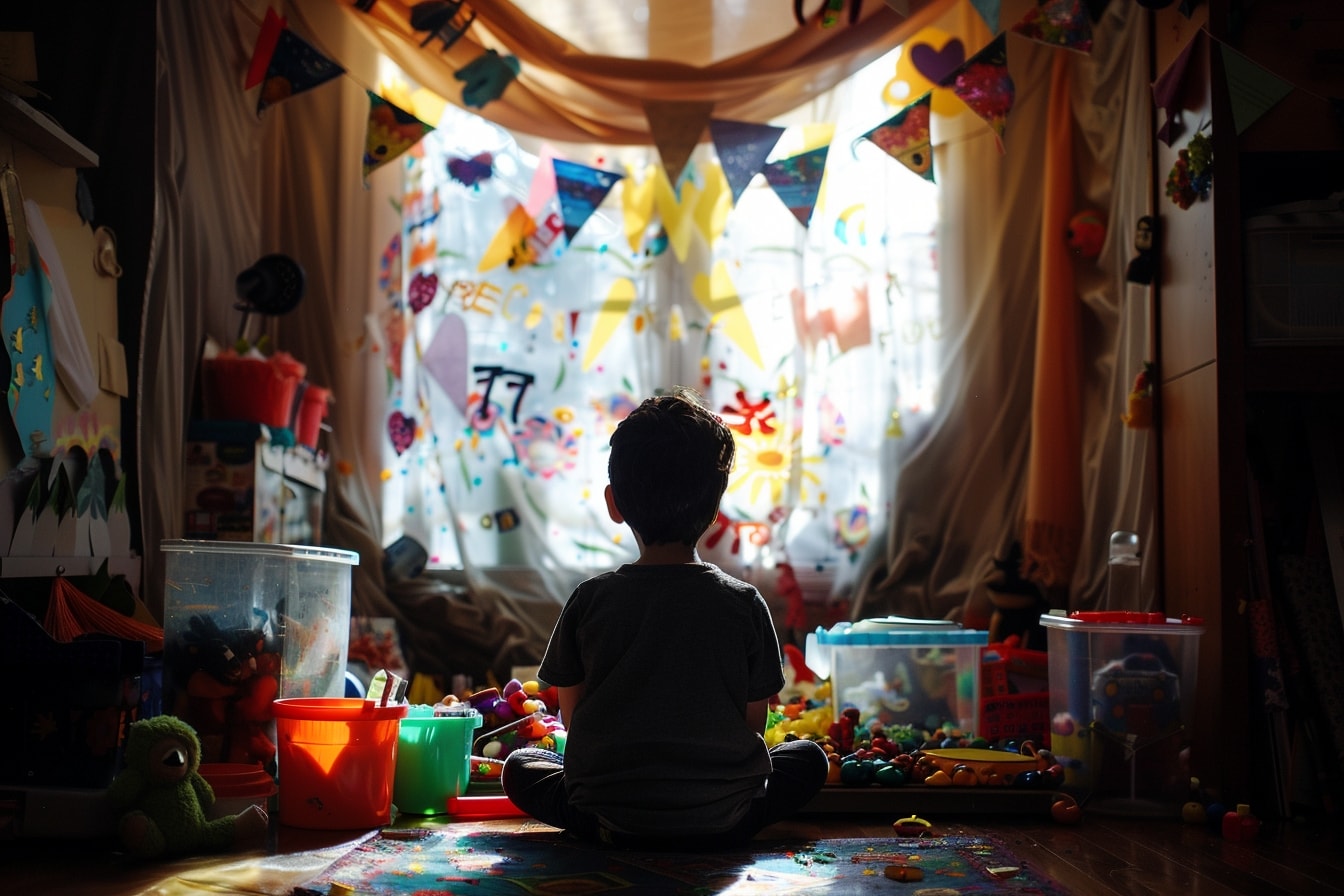
Nurturing Creativity
Welcome to the final act of our puppet theater journey, where we’ll explore the transformative power of imaginative play and creative expression in children’s lives. As we’ve discovered throughout this adventure, puppet theater is more than just a form of entertainment—it’s a powerful tool for nurturing creativity, fostering self-expression, and igniting the imagination.
Exploring the Benefits of Imaginative Play
Imaginative play is essential for children’s development, providing them with opportunities to explore, experiment, and express themselves in meaningful ways. Through puppet theater and other forms of imaginative play, children can:
- Develop Communication Skills: Puppet theater encourages children to express themselves verbally, practice active listening, and communicate their ideas and emotions with others.
- Enhance Social Skills: Puppet shows provide opportunities for collaboration, cooperation, and teamwork, as children work together to script, rehearse, and perform their productions.
- Boost Creativity and Problem-Solving Skills: Puppet theater sparks children’s creativity and encourages them to think outside the box, problem-solve, and adapt to new situations as they bring their stories to life on stage.
By nurturing creativity and imagination in children from a young age, we’re laying the foundation for a lifetime of learning, exploration, and self-discovery. Whether they become artists, scientists, or entrepreneurs, the skills and qualities they develop through imaginative play will serve them well in all aspects of their lives.
Extending the Learning Experience
Imaginative play doesn’t have to end when the puppet show is over—there are countless ways to extend the learning experience and continue nurturing creativity in children’s lives. Here are a few ideas to get you started:
- Storytelling Workshops: Host storytelling workshops where children can create and share their own stories, using puppets, props, and other creative tools to bring their imagination to life.
- Art and Craft Projects: Organize art and craft projects inspired by themes and characters from puppet shows, allowing children to explore different materials and techniques as they express themselves creatively.
- Outdoor Adventures: Take puppet theater outdoors and explore nature-inspired themes and storylines, encouraging children to engage with the natural world and discover new wonders in their environment.
By providing children with opportunities for creative expression and imaginative play, we’re empowering them to become confident, curious, and compassionate individuals who are ready to take on the world with open hearts and open minds.
As we conclude our puppet theater journey, I invite you to continue fostering creativity and imagination in your children’s lives, knowing that every puppet show, every art project, and every outdoor adventure is a precious opportunity for growth, discovery, and joy.
As we come to the end of our puppet theater journey, I’m filled with a sense of gratitude and wonder for the magic we’ve created together. Throughout this adventure, we’ve explored the transformative power of imaginative play, the joy of creative expression, and the beauty of storytelling through puppetry.
But our puppet theater journey is far from over—it’s just the beginning of a lifelong exploration of creativity, imagination, and discovery. As parents, educators, and caregivers, we have the privilege and responsibility of nurturing these qualities in the children we love and support.
So let’s continue to encourage our children to dream big, play freely, and express themselves boldly. Let’s create opportunities for them to explore new ideas, embrace new challenges, and celebrate their unique talents and perspectives.
And let’s never forget the magic of puppet theater—the joy of bringing stories to life, the thrill of stepping into new roles and worlds, and the power of imagination to inspire, uplift, and unite us all.
As we bid farewell to our puppet theater adventure, I invite you to carry the spirit of creativity, imagination, and wonder with you wherever you go. Whether you’re putting on a puppet show with your children, exploring new art projects, or simply embracing the beauty of everyday moments, may you always find joy, inspiration, and connection in the world around you.
Thank you for joining me on this journey. Here’s to many more magical adventures to come!
Want to take your knowledge to the next level? Check out these must-read articles:
- Balloon Blast: Gross Motor Skills with Balloon Games
- Toddler-Friendly Science: Kitchen Chemistry Experiments
Organize your baby’s wardrobe with our baby clothes closet organizer products! Our organizers are designed specifically for baby clothes. Get your baby’s clothes neat and tidy with our selection of organizers – shop now!
Step into Sue Brown's World of Baby Care, where you'll find a treasure trove of knowledge and wisdom waiting to be explored. Sue's dedication to providing accurate and up-to-date information on baby care shines through in every article, blog post, and resource she shares. From newborn essentials to sleep training tips, breastfeeding advice to nurturing your baby's development, Sue covers a wide range of topics that are essential for every parent to know. Her warm and compassionate approach creates a sense of community and reassurance, making her website a safe haven for parents seeking guidance and support. Let Sue Brown be your partner in this beautiful journey of parenthood, as she empowers you to create a loving, nurturing, and thriving environment for your little one.
- Indoor Air Quality for Infant Respiratory Health - October 20, 2025
- Positive Discipline Foundations: Setting the Stage From Infancy - October 18, 2025
- 2025’s Most Innovative Baby Products Worth the Investment - October 16, 2025

